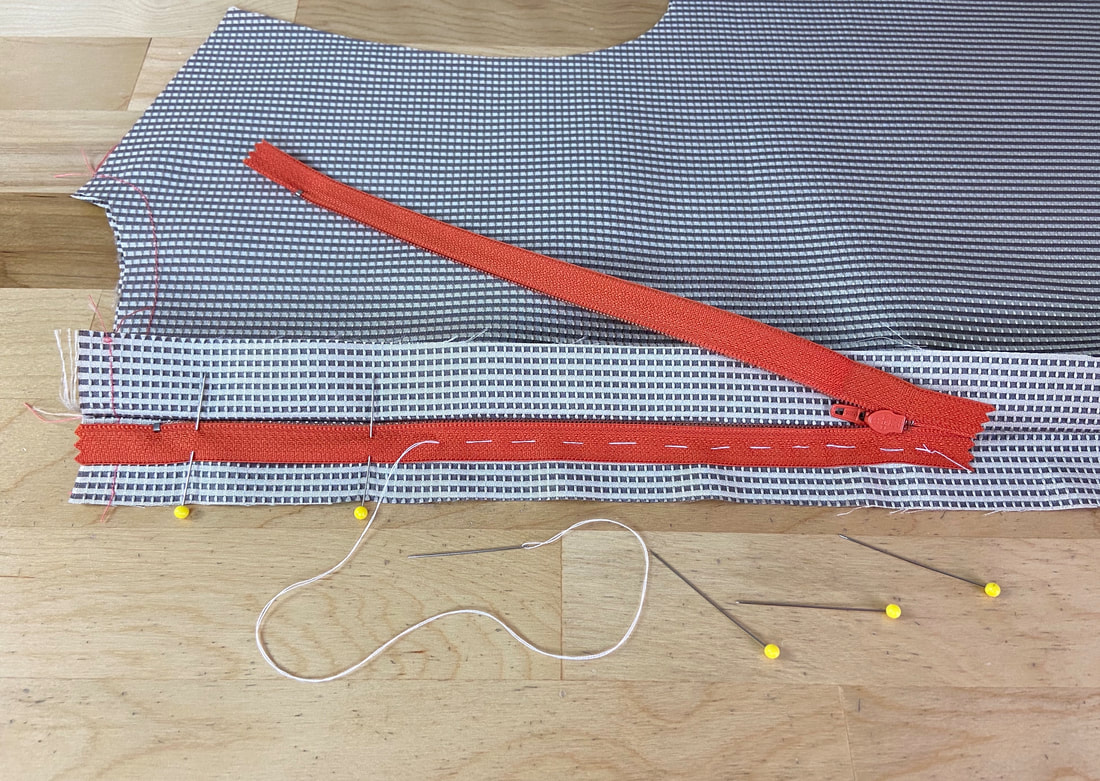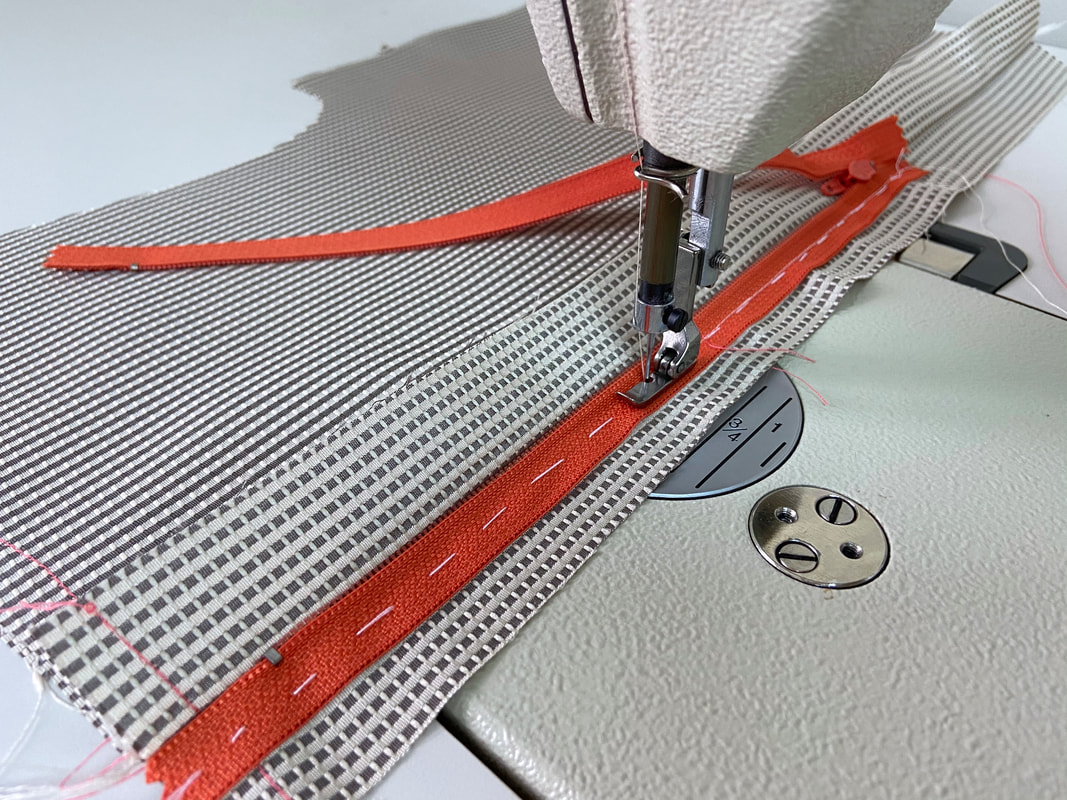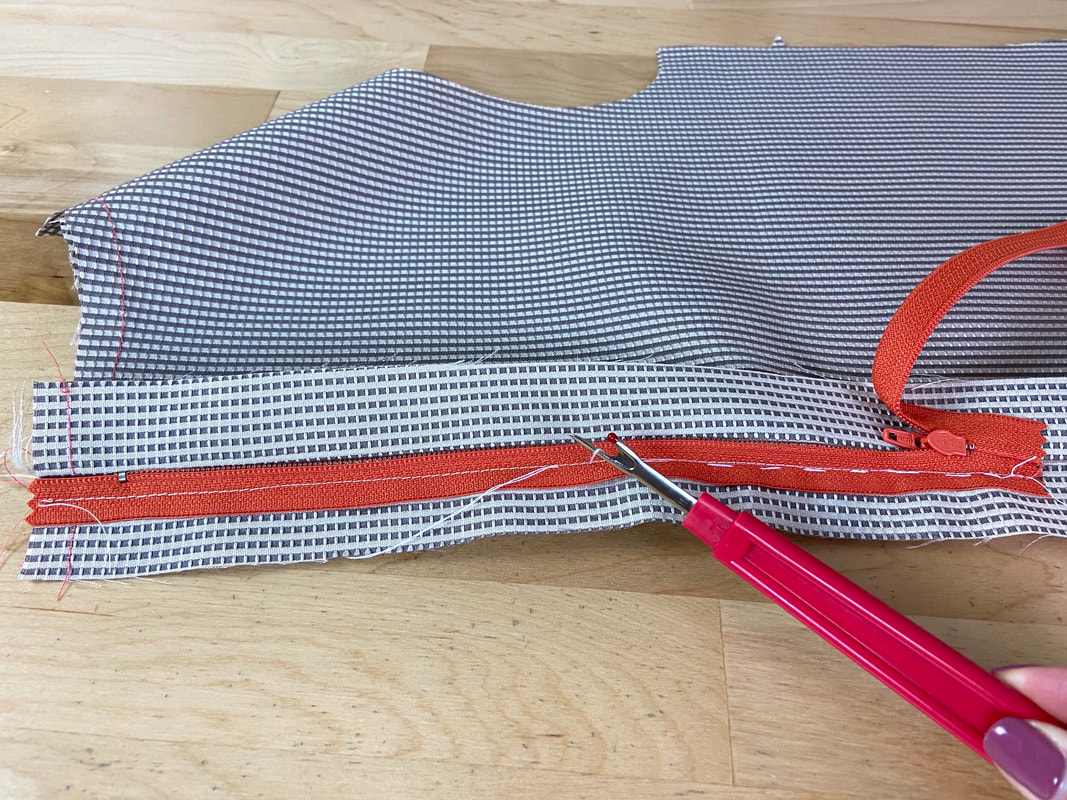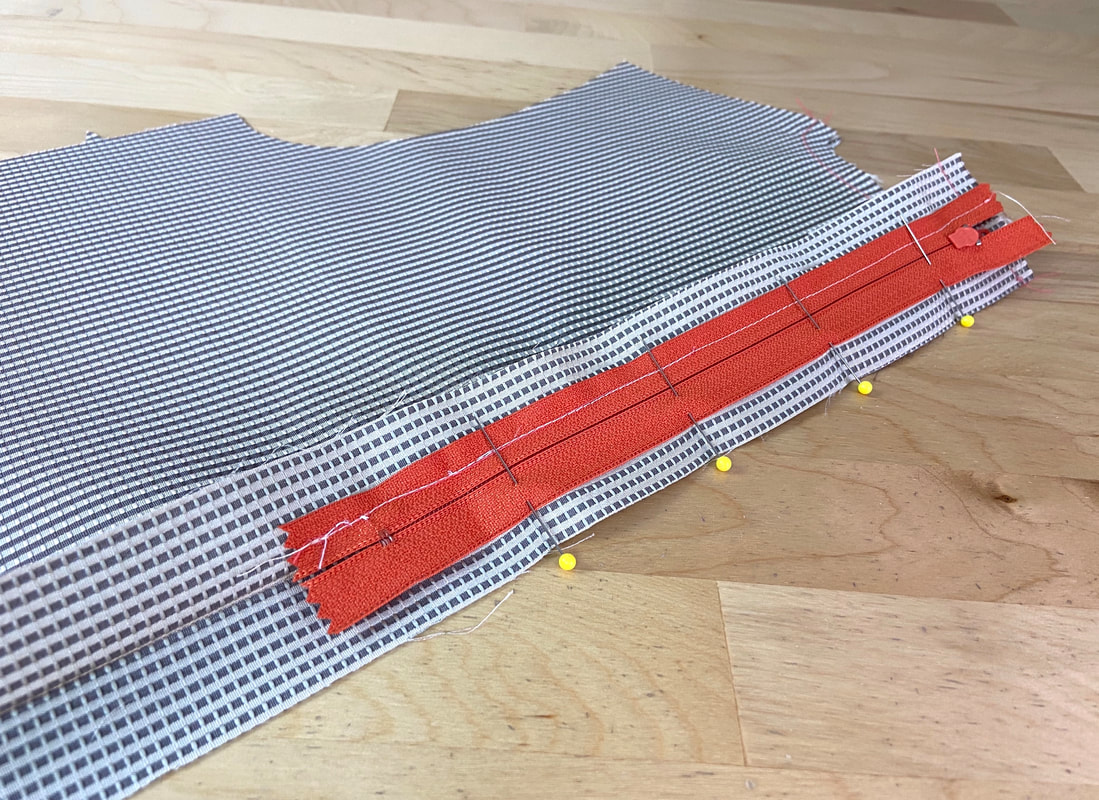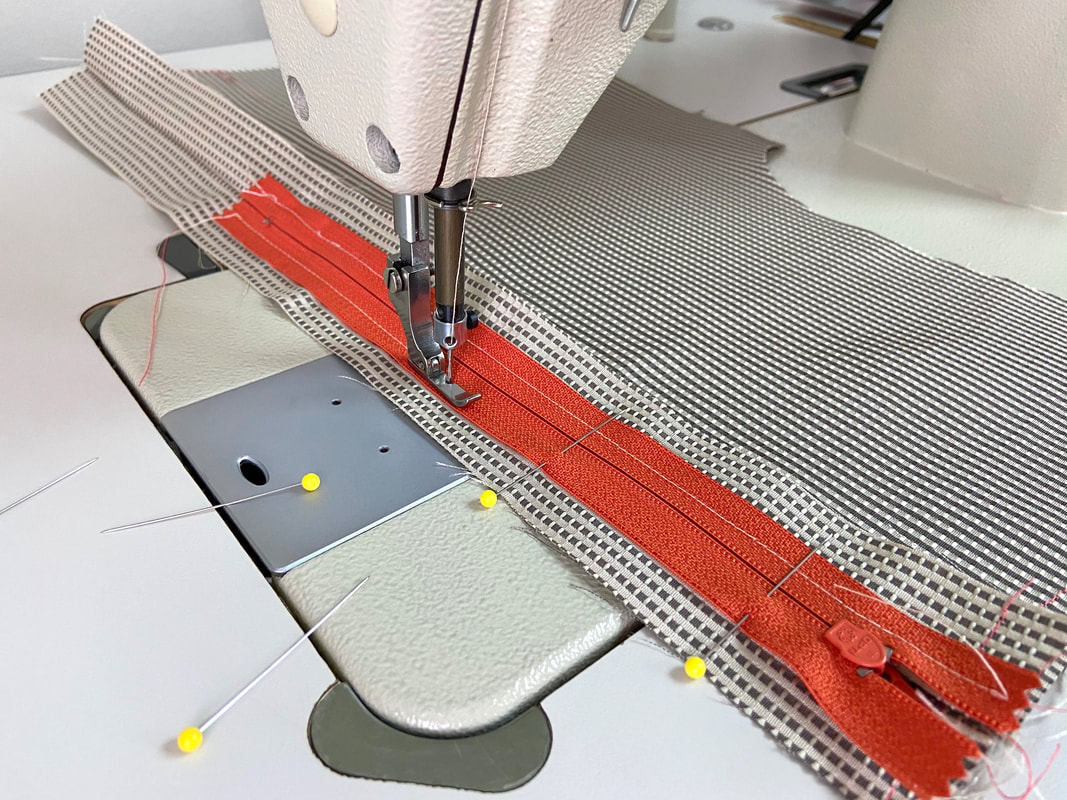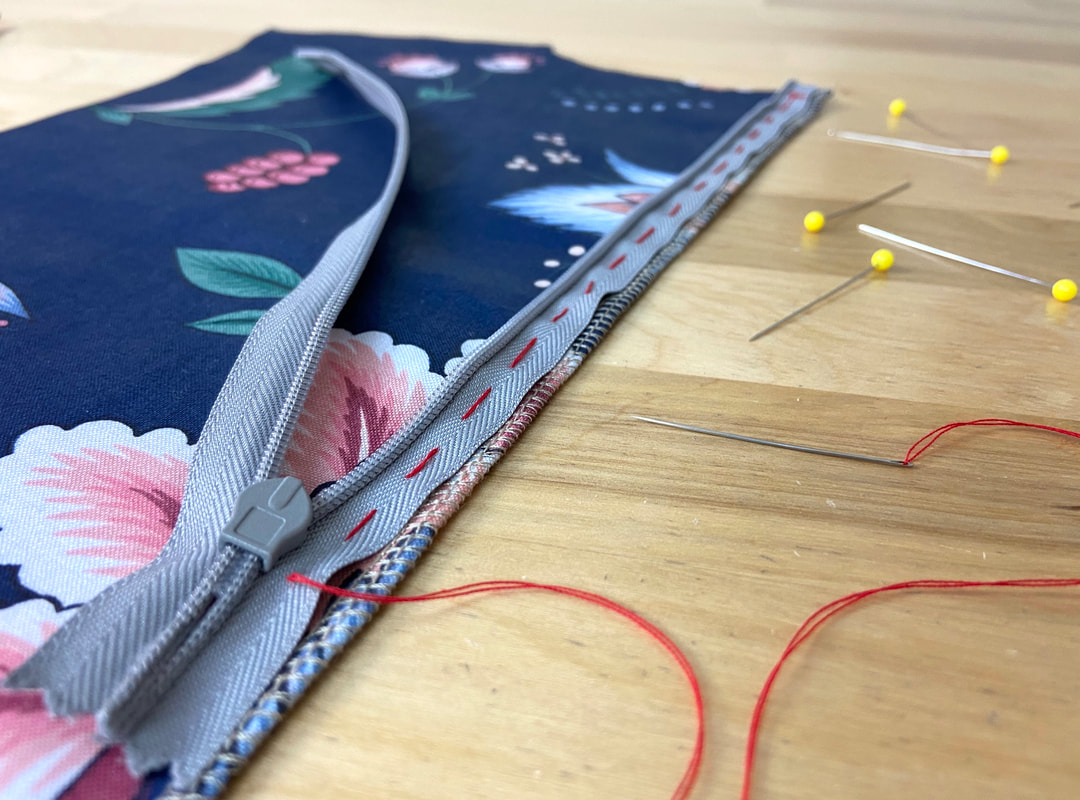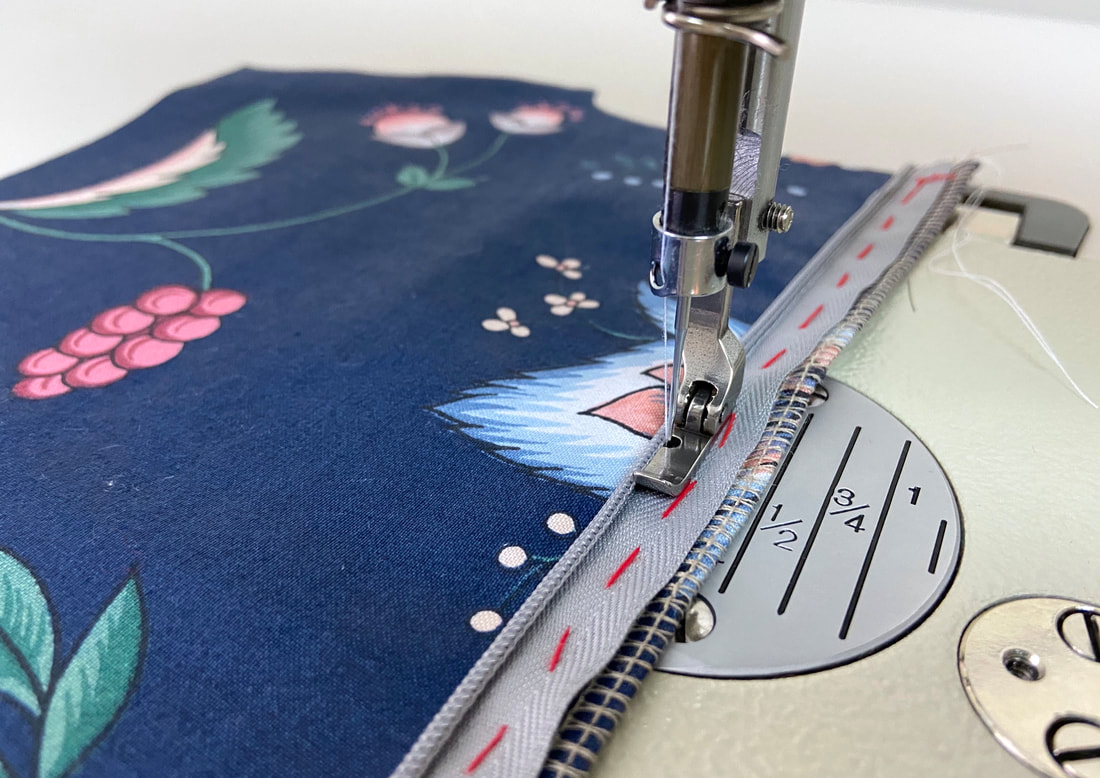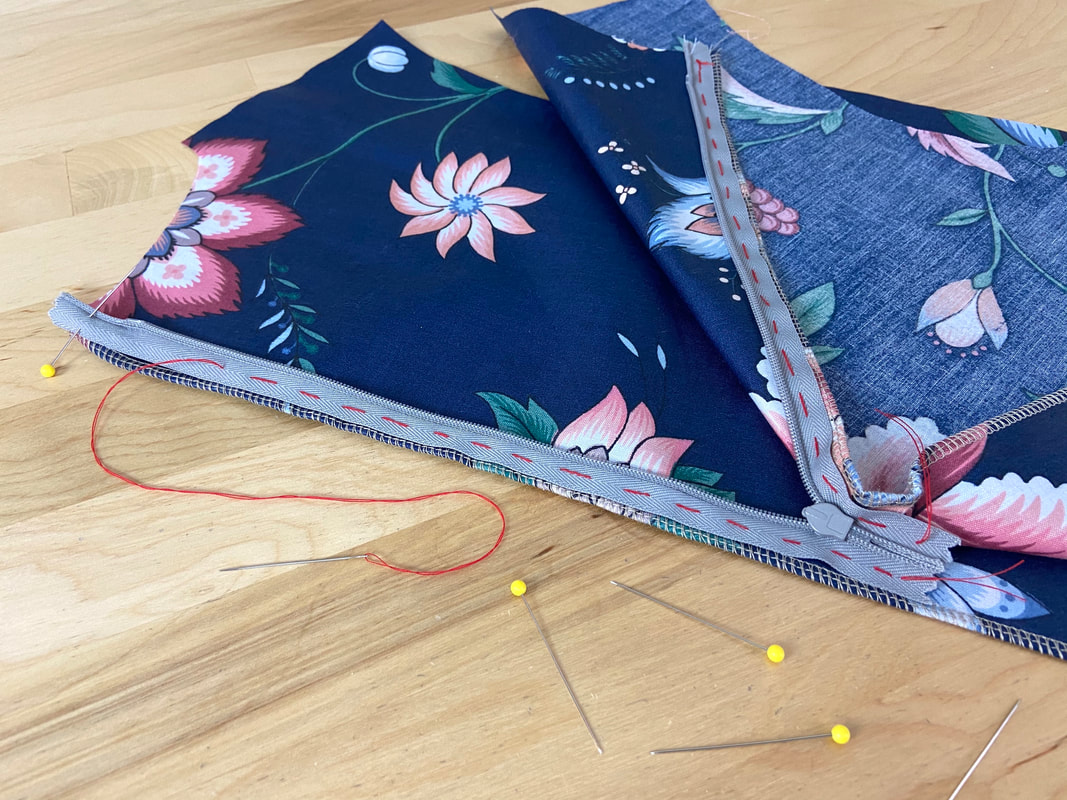Sewing Tip: Use Hand Basting To Keep Zippers Perfectly Aligned In The Stitching/Application Process
If not fully secured prior to machine stitching, zippers not only tend to slip out of alignment, the zipper tape can often crease as it is being fed under the presser foot. While pins, inserted perpendicularly through the zipper tape and seam allowance edges, work well if you are a seasoned dressmaker (and have a good grasp on zipper behavior during stitching), pins alone may not offer enough stability during the machine stitching process.
Sewing Tip: In lieu of pins, use a hand basting stitch to keep the zipper perfectly aligned as needed for the machine stitching process. It helps to first align and pin the zipper, then replace the pins with hand basting prior to applying the final stitch.
The hand basting will ensure that the zipper tape lays completely flat and remains perfectly aligned. This gives you the freedom to just focus on applying a smooth stitch and not have to worry about simultaneously keeping the zipper in place as you stitch.
It is good practice to stitch right next to the hand basting and not directly on top of it as this will make it much easier to remove when no longer needed. Use a seam ripper for the removal process.
When sewing applications that require the zipper to remain closed throughout the entire construction process, you don't always need to hand baste the second zipper tape portion. Securing the second zipper tape with pins inserted perpendicularly through the tape and seam allowance edge should be sufficient to keep the zipper in place for a flawless stitch application.
As you machine stitch this second zipper portion, you will notice that the entire zipper maintains its alignment perfectly- the pins are there to ensure the zipper tape lays flush with the seam allowance layer underneath thus avoiding any potential creasing in the zipper tape.
Hand basting is an especially useful stabilizing and alignment tool when sewing invisible zippers. Invisible zippers are stitched in the crease created by the zipper teeth and tape. This unique application requires caution to apply the stitch as accurately as possible without stitching too far or too close to the zipper coils. Hand basting takes the stress out of having to maintain the entire zipper aligned to the seam allowance edge by hand as you stitch so you can focus on what really matters- applying the stitch correctly.
Hand basting invisible zippers is especially important when using a regular zipper foot instead of a specialized invisible foot. An invisible zipper foot provides a slot that keeps the zipper coils up during the stitching process.
If using a regular zipper foot (as pictured above), you'll have to use your fingers to keep the coils up during the stitching process. Using hand basting instead of pins will allow you to spend all your energy on applying an accurate stitch and worry less about the zipper shifting out of alignment during the application process.
If using a regular zipper foot (as pictured above), you'll have to use your fingers to keep the coils up during the stitching process. Using hand basting instead of pins will allow you to spend all your energy on applying an accurate stitch and worry less about the zipper shifting out of alignment during the application process.
To ensure that both zipper portions are aligned perfectly on both seam edges, you should also hand baste the second zipper tape prior to stitching. Invisible zippers are stitched fully open thus each zipper tape portion is treated individually. When the finished zipper is closed and the seam edges come together, the seam's top and bottom horizontal edges should align perfectly. This serves as proof that your invisible zipper has been stitched correctly.

